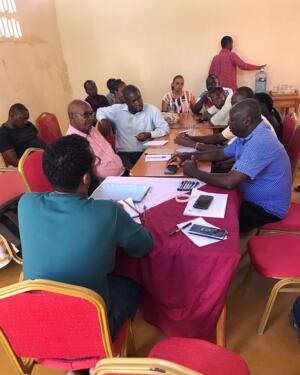How Research Can Contribute To Sustainable Ecosystems at Lake Kenyatta– Final Update
In October 2022, Lamu Outreach Youth Organisation started their project using research to contribute towards sustainable ecosystems in Lake Kenyatta. This project used research and community meetings to contribute towards the creation of sustainable community-led projects to protect and restore ecosystems around Lake Kenyatta. The project aimed at tackling multiple issues faced in the area including, protecting biodiversity, regenerating, and restoring land and finally, preventing conflict and increasing constructive collaboration among stakeholders.
Project Summary
The project is made up of community and stakeholders awareness and sensitization sessions. In these sessions, community members will be made aware of conservation techniques that could be used to protect the lake. Communities will then be encouraged and supported to create conservation projects that are influenced by their experiences on the ground.
Environmental Challenges Around Lake Kenyatta
- Excessive and unguided use of chemicals such as fertilizers and pesticides causing water pollution killing living organizing in the lake.
- Planting along the slopes and water inlets
- Use of tractors to tilt the slopes of the farms causing soil erosion and runoffs during rainy sessions.
- Irresponsible use of borehole water for irrigation depleting groundwater
- Poor farming and fishing methods
- Encroachment of land around the lake

Expected Outcomes
The objectives of the research are;
- Collect data to understand the daily activities of the community around the lake
- Sensitize and create awareness among the members of the community living around the lake about the environmental impact of human activities on the biodiversity of the lake.
- To understand the potential solutions for protecting the lake.
- To create constructive collaboration between different community groups where conflict is often rife
- To design and create potential projects to mitigate the issues led by the community
- To have community buy-in on conservation efforts for increased longevity of conservation efforts and more sustainable protection
Outcomes Achieved
- The project reached 130 community members and community stakeholders. Among the community members were herders, farmers, and members of BMUs (Beach Management Units).
- The project gained actionable information needed to protect lake Kenyatta in the form of relevant projects.
- Upon LOYI’s invitation, the County Governor visited Lake Kenyatta together with the team to understand the project and the need for community action.
- The team approached the county commissioner to ensure the grabbed land around Lake Kenyatta – which is gazetted as water catchment – is reclaimed
- They identified key areas of intervention which will have the most impact and can easily be sustained by the community
- Empowered the community through education on sustainable and environmentally friendly farming, herds keeping and fishing.
- The project achieved to increase the sense of urgency of the community to protect the lake
- The team brought the political will that was lacking to protect Lake Kenyatta.
Next Steps
This project was the first phase of work proposed by LOYI. In the next phases, the group wishes to act on the knowledge and community support they gained in phase one to enact the proposed projects.
LOYI compiled an extensive list of projects that were suggested by the community. They have shortlisted this to just 2 projects for which they will be seeking further funding. These projects are;
- A demonstration farm should be established to act as a source of information centre to farmers and herders as well as to practice environmentally friendly agricultural activities such as permaculture and use of graded livestock.
- Introduction of ecotourism and beekeeping as alternative livelihoods for the BMUs (Beach Management Units) in Mpeketoni
As the changing climate is the biggest challenge faced by the communities in Mpeketoni LOYI hopes that these projects will help to protect water as the most valuable resource as well as continue to foster intercommunal cooperation.
